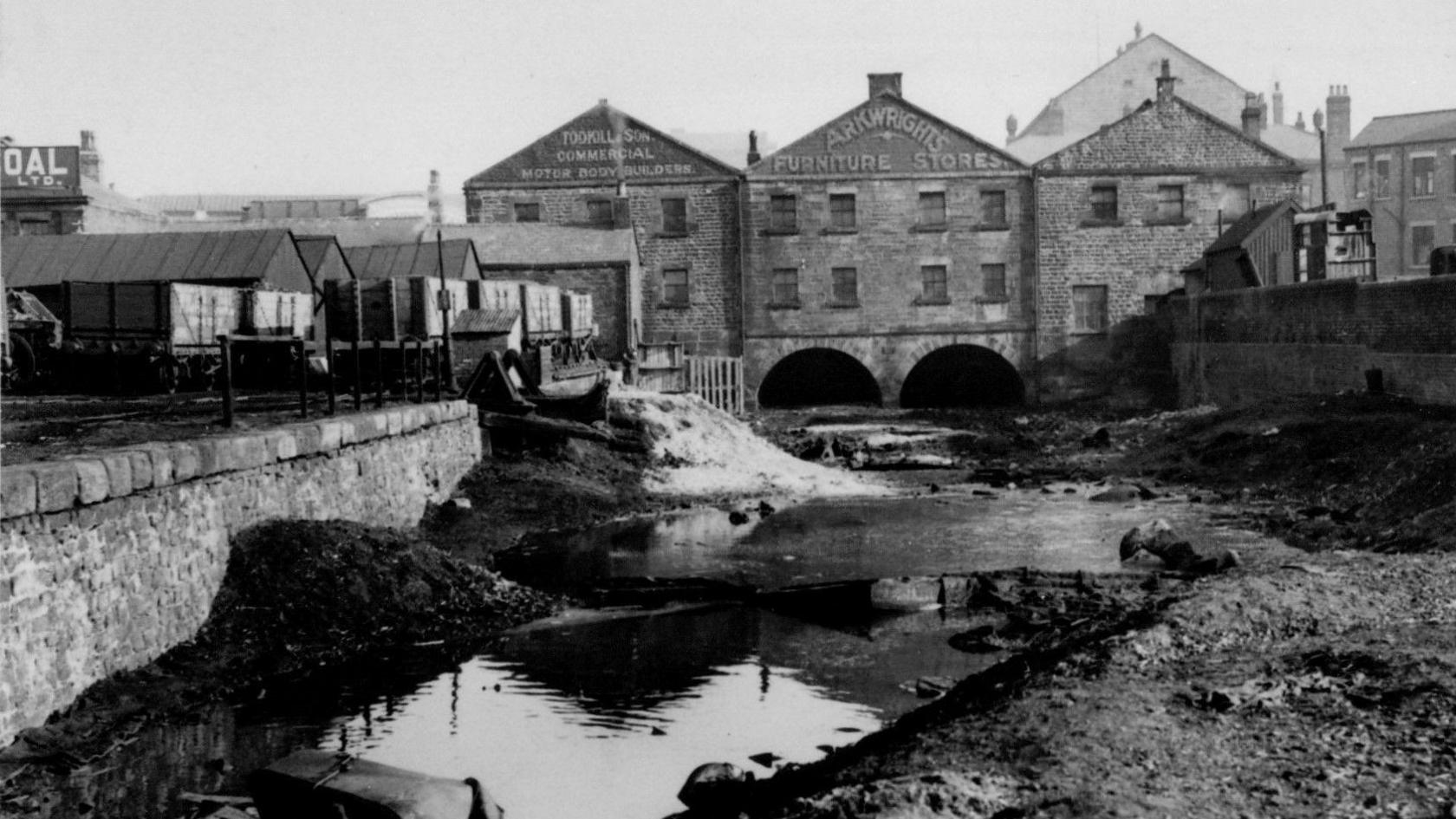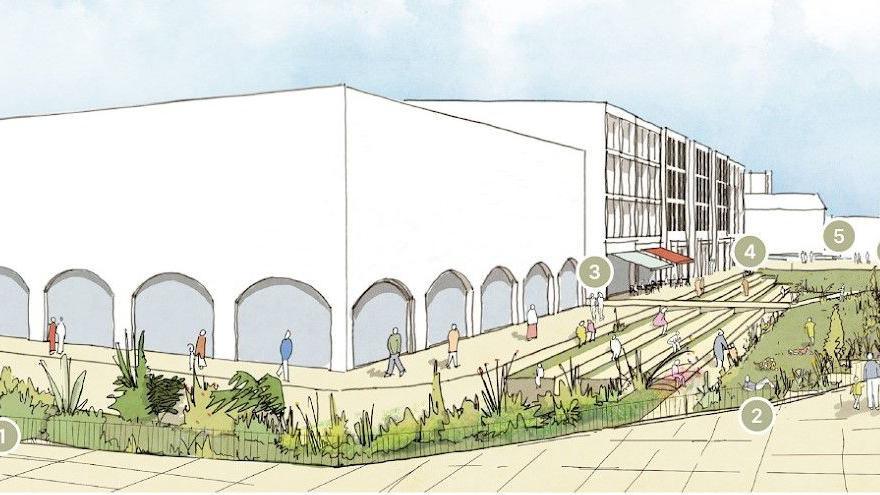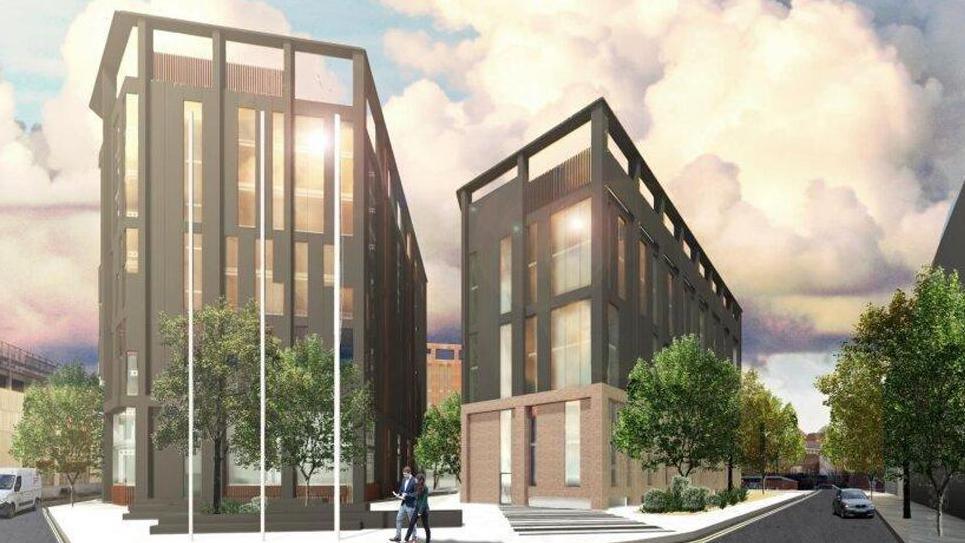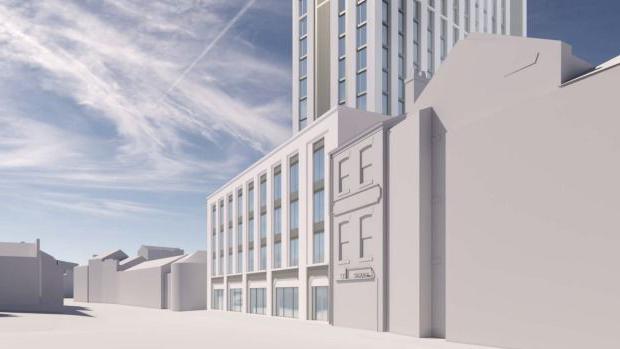Hopes buried canal could become city green space

Preston Basin in dereliction in 1938
- Published
Part of a canal buried before the outbreak of World War Two could be uncovered to create a new wetland and green space, a campaigner has suggested.
The site of the Lancaster Canal terminal in Preston is believed to lie underneath the car park of retail units on the corner of Corporation Street and Ringway.
Urban planner Daniel Crowther said redesigning the plot - known as the "Preston Basin" - could "really draw people" and "nature" back to that part of the city as part of regeneration plans.
Lancashire County Council has been approached for comment about the proposal.
Mr Crowther, from Preston, has enlisted the help of urban design specialists to demonstrate how the site - which sits in front of shops including Poundstretcher and Abakhan - could look, as part of a wider transformation of the area.
"This site is Preston’s story, really - thousands of people, directly and indirectly, were involved in the building, planning and the working of the canal when it was open," he said.
"It's a shared history and heritage that should be passed down and recalled [as part of] any restoration project."
The blueprint was inspired by the publication two years ago of ambitious plans to regenerate the area around Preston station.

Part of what the site could look like under regeneration plans
The basin measured 300ft (91m) by 60ft (18m) and, together with a section of recovered Lancaster Canal, came into being in 1804 as a three-quarters-of-a mile extension to the 42 mile (68km) Lancaster Canal, which officially opened seven years earlier.
The Lancaster Canal, Preston Basin and the adjoining tramroad played a crucial role in the development and growth of Preston at the beginning of the 19th century.
Mr Crowther said such "cues from history" were among the main selling points of the proposed scheme, which he hoped would persuade local authorities leading the station quarter regeneration plans to back it.
He is due to give a presentation on the proposal at a meeting of the Preston Historical Society in September.
The Local Democracy Reporting Service approached Lancashire County Council – which, together with Preston City Council and the University of Central Lancashire, is behind the Preston Station Quarter Regeneration Framework – for comment.
Listen to the best of BBC Radio Lancashire on Sounds and follow BBC Lancashire on Facebook, external, X, external and Instagram, external. You can also send story ideas to northwest.newsonline@bbc.co.uk, external
Related topics
- Published26 August 2024

- Published9 June 2024
